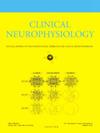Seizure and electroencephalographic characteristics in anti-LGI1 encephalitis
IF 3.7
3区 医学
Q1 CLINICAL NEUROLOGY
引用次数: 0
Abstract
Objective
To delineate seizure and electroencephalographic (EEG) characteristics in a cohort of patients with anti-leucine-rich glioma-inactivated 1 (LGI1) encephalitis.
Methods
Sixty-six newly diagnosed anti-LGI1 encephalitis patients with seizures were consecutively recruited. EEG data was obtainable for 63 patients, including 24-hour video EEG (VEEG) for 35 participants. Demographics, seizure characteristics, EEG findings, and general clinical data were reviewed.
Results
Among 66 patients, facial brachial dystonic seizures (FBDS), focal non-FBDS seizures, and secondarily generalized tonic-clonic seizures (sGTCS) occurred in 27.3 %, 59.1 %, and 57.6 %, respectively. Piloerection was observed in 27.3 %, and daily focal seizures were reported in 74.2 %. Sex-related analysis indicated females exhibited younger onset age with higher prevalence of focal non-FBDS seizures, piloerection, and daily seizures, whereas males had more sGTCS and cerebrospinal fluid abnormalities (p < 0.05). Interictal EEG revealed excessive beta activity (EBA) in 40.0 %, interictal epileptiform discharges in 22.2 %, and rhythmic delta activity in 12.7 %. Quantitative analysis provided confirmation of EBA. VEEG captured clinical events in 48.6 % and subclinical seizures (SCS) in 20.0 %.
Conclusions
We highlight seizure characteristics in anti-LGI1 encephalitis, particularly piloerection, daily focal seizures, and sex-related differences. Beyond previously reported SCS, EBA appears to be a frequent EEG pattern.
Significance
These findings may facilitate the recognition of anti-LGI1 encephalitis.
抗lgi1脑炎的癫痫发作和脑电图特征
目的探讨抗富亮氨酸胶质瘤失活1 (LGI1)脑炎患者的癫痫发作和脑电图(EEG)特征。方法连续招募66例新诊断的抗lgi1脑炎发作患者。获得了63例患者的脑电图数据,包括35例参与者的24小时视频脑电图(VEEG)。回顾了人口统计学、癫痫发作特征、脑电图结果和一般临床资料。结果66例患者中,面肌张力障碍发作(FBDS)、局灶性非FBDS发作和继发性全身性强直-阵挛发作(sGTCS)发生率分别为27.3%、59.1%和57.6%。27.3%的患者出现毛头勃起,74.2%的患者出现局灶性癫痫。性别相关分析显示,女性发病年龄较年轻,局灶性非fbds发作、头勃起和每日发作的发生率较高,而男性sGTCS和脑脊液异常发生率较高(p <;0.05)。脑电图间期显示过度β活动(EBA)占40.0%,癫痫样放电占22.2%,节律性δ波活动占12.7%。定量分析证实了EBA的存在。VEEG捕获临床事件的比例为48.6%,亚临床发作(SCS)的比例为20.0%。结论:我们强调了抗lgi1脑炎的癫痫发作特征,特别是毛囊勃起、每日局灶性癫痫发作和性别相关差异。除了先前报道的SCS外,EBA似乎是一种常见的脑电图模式。意义这些发现有助于对抗lgi1脑炎的认识。
本文章由计算机程序翻译,如有差异,请以英文原文为准。
求助全文
约1分钟内获得全文
求助全文
来源期刊

Clinical Neurophysiology
医学-临床神经学
CiteScore
8.70
自引率
6.40%
发文量
932
审稿时长
59 days
期刊介绍:
As of January 1999, The journal Electroencephalography and Clinical Neurophysiology, and its two sections Electromyography and Motor Control and Evoked Potentials have amalgamated to become this journal - Clinical Neurophysiology.
Clinical Neurophysiology is the official journal of the International Federation of Clinical Neurophysiology, the Brazilian Society of Clinical Neurophysiology, the Czech Society of Clinical Neurophysiology, the Italian Clinical Neurophysiology Society and the International Society of Intraoperative Neurophysiology.The journal is dedicated to fostering research and disseminating information on all aspects of both normal and abnormal functioning of the nervous system. The key aim of the publication is to disseminate scholarly reports on the pathophysiology underlying diseases of the central and peripheral nervous system of human patients. Clinical trials that use neurophysiological measures to document change are encouraged, as are manuscripts reporting data on integrated neuroimaging of central nervous function including, but not limited to, functional MRI, MEG, EEG, PET and other neuroimaging modalities.
 求助内容:
求助内容: 应助结果提醒方式:
应助结果提醒方式:


